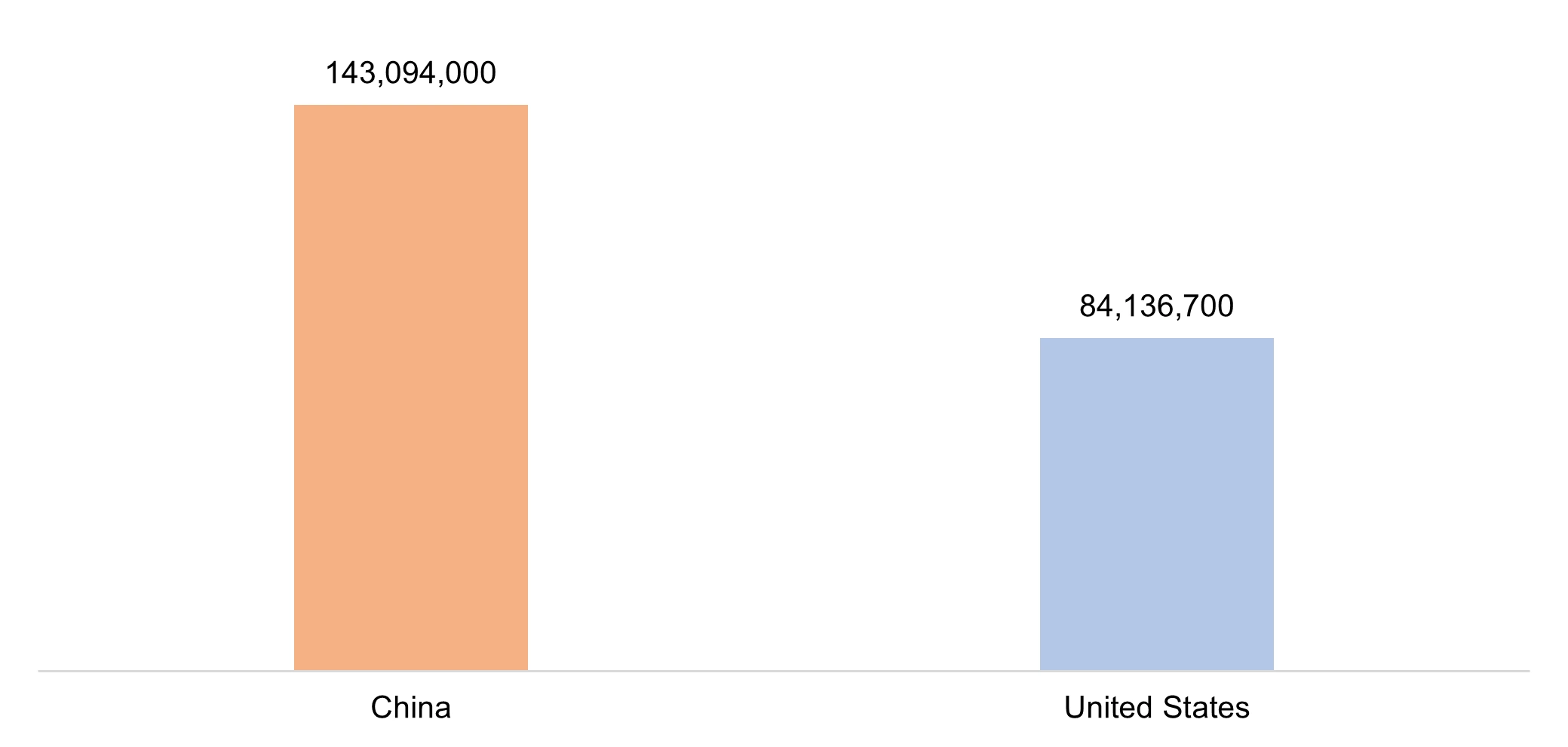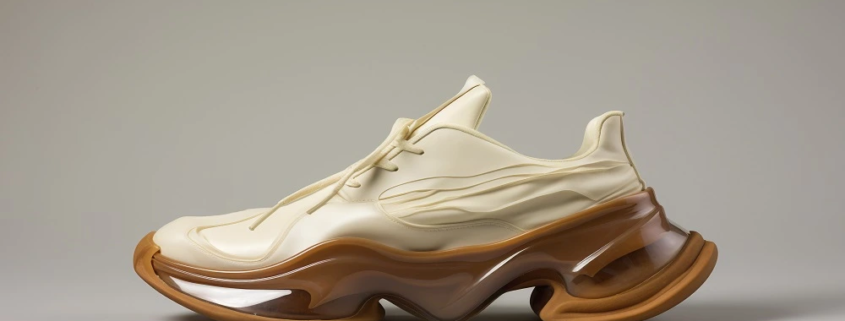Top Materials Used in 3D Printed Footwear and Their Market Impacts
3D printing has given immense possibilities in footwear engineering and manufacturing. It is enabling companies to create new shoe designs and address the growing demand for customization. The changing reality of today’s consumer landscape has provided opportunities for companies to create personalized experiences for the consumer in footwear design. Many footwear companies can now enable a new level of customization by the ability to create shoes specifically tailored to the wearer. Although the customers have a limited amount of customization with limited colors, mass-customized footwear is still in its early stages, the innovative technology and new development of new material applications footwear companies are beginning to develop strategies for shoe customization en masse.
Further, another key driver for the expansion of footwear 3D printing is digitization and automation of production. Companies are now optimizing production by automating the manufacturing process, making the production less labor-intensive, and more digitalization to streamline the production of certain shoe components. 3D printing requires the creation of a digital model and setting parameters, like printing speed and part orientation, on the build platform, using a specialized software application. The 3D printing software guides the printing process according to the digital model and pre-set parameters.
The requirement for lightweight shoes, cost reduction, and demand for unique and decorative colors and patterns have propelled the demand for different 3D Printed Footwear materials like Thermoplastic Polyurethane (TPU), Thermoplastic Rubber (TPR), new proprietary material called Rebound Resin, molded ethylene vinyl acetate (EVA) foam, etc.
Several materials and their market impacts have been as below:
1. Thermoplastic Polyurethane (TPU)
TPU and elastic polyurethane are the most commonly used materials in 3D-printed footwear. It offers several advantages over other materials like durability, lightweight, chemical & water resistance, and grip making it perfect for midsoles, outsoles, and even uppers in some cases. Recently, in November 2024, Nike teamed up with Zellerfeld to create the Air Max 1000. This new launch was made by TPU. The company used creatives and innovators with advanced digital tools to create Air Max 1. The flexibility of the material can be determined as a new slip-on design was created using the filament material extrusion process.
Polyurethane is the appropriate choice in production, as it is less expensive to produce and easier to work. Its durability also provides customers with longer-lasting, more cost-effective footwear. The major importers of polyurethanes in the world are the China and United States with import quantities of 143,094,000 Kg and 84,136,700 kg respectively. These two countries hold prominent positions in the development of 3D printing technologies and their deployments.
Polyurethanes (in Primary Forms) Imports, US and China, in Kg, 2023

Source: World Integrated Trade Solution (WITS)
2. Thermoplastic Rubber (TPR)
Thermoplastic elastomers (TPE), also referred to as thermoplastic rubbers (TPR), are a class of copolymers that consist of materials with both thermoplastic and elastomeric properties. It is utilized for the consumer-grade FFF 3D printing. TPE is a thermoplastic elastic material based on the hydrogenated product of SBS. The growing demand for the material has propelled product development such as, in September 2023, Carbon, a manufacturing technology company, announced the release of EPU 46, the newest elastomer material.
EPU 46 is a combination of several material properties, with durability, and has the choice of several rich colors. It can be applied in the customizable production of a wide range of premium products like saddles, footwear, and grips. EPU 46 is designed to meet the growing demands of a broad spectrum of industries. Additionally, EPU 46 contains 40% bio-based material and is designed to minimize production waste. The growing demand for 3D printed will increase the demand for TPE for its printability and broader mechanical properties.
Further, growing awareness of the significance of recyclable material has been pushing the market innovation. UAE-based 3D printed footwear startup ELASTIUM introduced its first 3D printed sneakers made from 100 percent recyclable foam in May 2023. The sneakers are made from lattice-structured low-density thermoplastic elastomer (TPE) foam material. The sneakers have comfort, softness, and resilience, like Crocs, and a cushioning capability comparable to high-performance sneakers.
3. A new proprietary material called Rebound Resin by Formlabs
Rebound Resin is a production-ready elastic 3D printing material. The Formlabs’ Factory Solutions have teamed up with New Balance to deliver the new 3D printing material and production system they needed to launch TripleCell. TripleCell is a new platform to deliver on-demand performance customization for consumers.
New Balance needed a 3D printing material for the necessary manufacturing and end-use applications, Formlabs materials team collaborated with the company to develop a completely new material from the ground up. Rebound Resin has resilient lattice structures, much higher energy return, tear strength, and elongation than any other Formlabs stereolithography (SLA) resin. The elongation is up to 300%, with a tear strength of 110 kN/m, and tensile strength of 22 MPa. These properties set the rebound resin distinct stand than many of its peer materials in the market.
4. Growing awareness of the significance of waste management (Circular Economy)
The Valencian Community in Spain produces 65% of the shoes in the country. It is estimated that the waste generated by footwear factories in leather scraps amounts to 3,500 tonnes per year. To solve this issue, AIMPLAS, with several other institutes, was working on the ECOFAP Project to develop a new 3D printing material based on recycled natural leather in November 2024. This can be used in different components for fashion, textiles, and footwear. Specifically, the project is focused on the footwear industry to create new materials for making soles and heels using FDM 3D printing.
This research project was framed within the concept of the circular economy. The project allows waste from the footwear industry to be recovered and reused for the development of new products. This reduces the industry’s environmental impacts. ECOFAP aimed to solve the problem of recycling leather scraps in the manufacture of footwear.
5. Polyhydroxyalkanoates (PHAs)- class of organic material
Polyhydroxyalkanoates (PHAs) are known for their versatility and biodegradability. PHAs can be an alternative to petroleum-based plastic. PHAs can be produced by bacteria that consume atmospheric carbon dioxide, methane, etc. They are biologically recyclable, and 100% biodegradable in ambient conditions.
In October 2024, OXMAN, a design lab to create and deliver nature-centric products unveiled O°, a biomaterial, digital, and robotic technology platform that powers the production of wearables that are 100% biodegradable. Their technology can produce shoes with 3D printers with combinations of computationally designed 3D-printed PHA uppers, 3D knit textiles from PHA-based yarn, and biomanufactured pigments. It has no petrochemicals or microplastics. The company aimed to replace shoes made from petroleum-derived plastics with PHAs.
Conclusion
Several major factors determine the market for the materials used for 3D printed footwear, one being the use of the material to be sustainable and recyclable which favors the circular economy. Further, the demand for cost-effective and efficient materials like TPU will be significant. Besides, several innovations and developments have pushed the research of new materials with the growing application of 3D printing.
Find some of our related studies:



